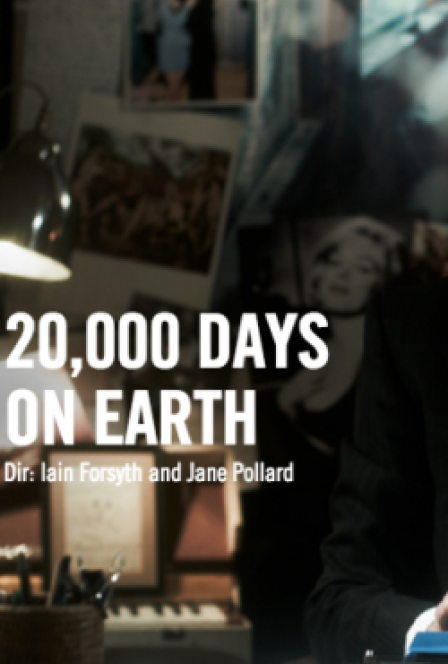I’m not entirely sure I’m the right person to write this review. I have a sinking feeling that, given my established Nick Cave fandom and concomitant knowledge of his personal and artistic endeavors, I may have reacted to this movie in an entirely different manner than someone who would have only a passing knowledge of his body of work. While it’s beyond cliché for a film reviewer to wonder if he can be wholly impartial given his own set of circumstances and tastes, I am truly not certain that a person going into this film blind would find the same meaning in many of its most important scenes as I did.
After all, this documentary, which purports to follow Cave through what is literally his 20,000th day on Earth, is steeped in the musician’s creative life; the world he has created through his songs, novels and screenplays forms the backdrop on which the film’s events are played out. Cave himself seems fixated on his work as it represents both an opportunity for him to transform himself and to play out past events.
Cave does a lot of automobile driving in the film, mostly through the seaside town of Brighton in which he lives, with brief excursions to the cliffs of Dover to visit his bandmate and creative partner Warren Ellis, and to an archive of his journals, photographs, and other ephemera which apparently requires the attention of a full-time staff of researchers. He also conducts semi-imagined conversations with figures from his past, who ride shotgun in his Jaguar and serve to further advance the narrative.
If the film is to be believed, Cave’s life circa 2013-2014 is perfectly adequate: he’s in love with his adopted city, enraptured by his family, and creatively fulfilled by the art that he makes with some of his closest friends. But he still finds himself almost obsessively trying to piece together his past (thus the archive). One gets a sense that much of this is borne from a sense of bereavement — that the early death of his father and his fractured, heroin-streaked exploits through the 80’s have left him with an acute sense of time being lost, either because it has slipped away or because it cannot be recalled. Fans of Cave will be surprised to see him leaving himself so open and vulnerable.
However, Cave remains in total control throughout, and his presence, as it does on stage and on record, commands the tone of the film. At times it seems as though directors Forsyth and Pollard are acting in service of Cave’s vision, that they are content to only film what he wants to be filmed, to delve only as deep as he will allow them to go. Cave opens himself up here, but the film remains stylized and high-concept, and its semi-fictionalized nature makes it difficult to feel like it’s a truly intimate look at the musician himself.
Of course, the confusing gray area between fiction and reality was built into the architecture of the film. The strange conceit that they are presenting what is in fact Cave’s 20,000th day on Earth effectively sets the film’s tone, and squashes any attempt to take the film at face value. Far from making the film seem disingenuous or ham-fisted, however, the concept gives Forsyth and Pollard a significant measure of freedom. The co-directors aren’t afraid to stretch the truth or even the fabric of reality regarding their subject and, deft editors that they are, don’t shy away from 20,000 Days on Earth’s more bravura moments.
The film is a compelling portrait of a musician deep into an established career, and a creative representation of the mental exercising (and exorcising) that must be done in order to sustain a fertile creative life. And even if many of its revelations, call-backs, and cameos will be lost on non-Bad Seed fans, 20,000 Days on Earth remains a riveting portrait of an artist at perpetual unrest.

